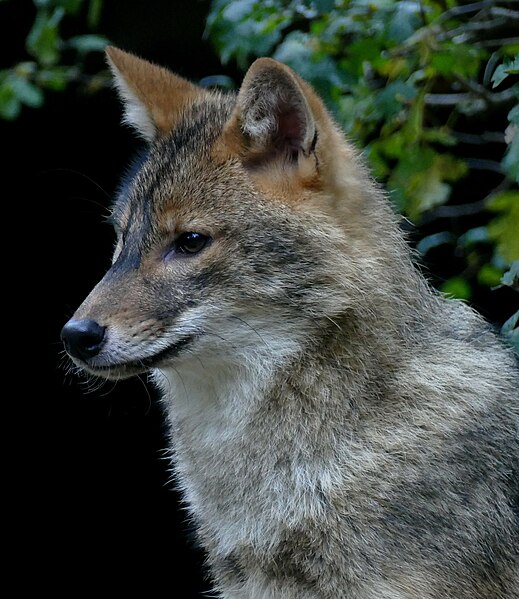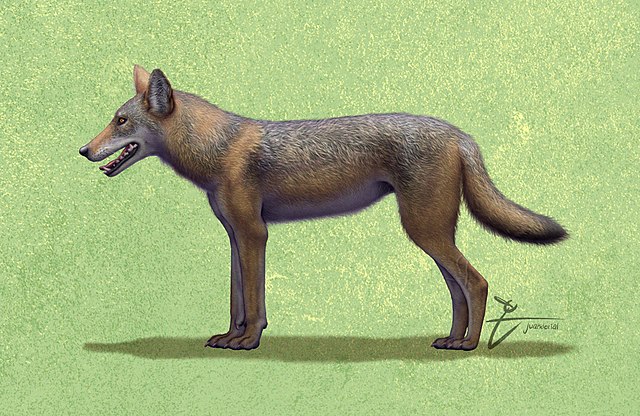The golden jackal, also called common jackal, is a wolf-like canid that is native to Eurasia. The golden jackal's coat varies in color from a pale creamy yellow in summer to a dark tawny beige in winter. It is smaller and has shorter legs, a shorter tail, a more elongated torso, a less-prominent forehead, and a narrower and more pointed muzzle than the Arabian wolf. It is listed as Least Concern on the IUCN Red List due to its widespread distribution and high density in areas with plenty of available food and optimum shelter.
Golden jackal
Golden jackal profile
Lateral and dorsal aspects of skull
Syrian jackal (C. a. syriacus) hunting in reeds
The evolution of the wolf occurred over a geologic time scale of at least 300 thousand years.
The grey wolf Canis lupus is a highly adaptable species that is able to exist in a range of environments and which possesses a wide distribution across the Holarctic. Studies of modern grey wolves have identified distinct sub-populations that live in close proximity to each other. This variation in sub-populations is closely linked to differences in habitat – precipitation, temperature, vegetation, and prey specialization – which affect cranio-dental plasticity.
Canis etruscus skull in the Montevarchi Paleontological Museum
Diagram of a wolf skull with key features labelled
Life restoration of C. mosbachensis
European wolf skull – sketch







